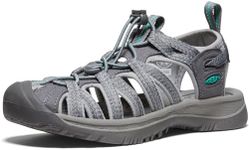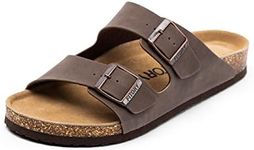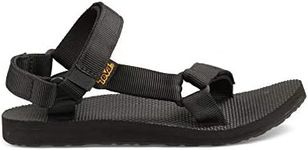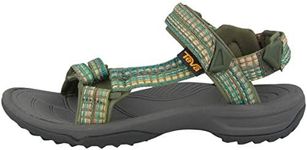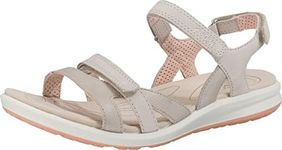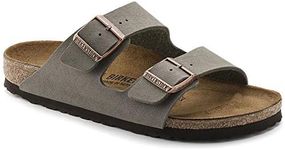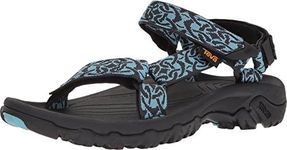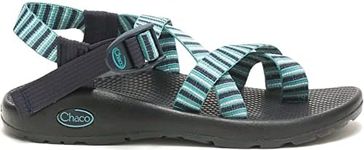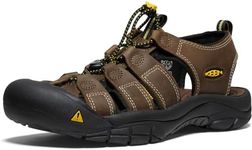Buying Guide for the Best Walking Sandals
Choosing the right walking sandals is essential for comfort and support during your outdoor adventures. Whether you're planning a casual stroll or a more intense hike, the right pair of sandals can make a significant difference in your experience. Here are some key specifications to consider when selecting walking sandals, along with explanations to help you make an informed decision.MaterialThe material of the sandals affects durability, comfort, and breathability. Common materials include leather, synthetic fabrics, and rubber. Leather is durable and molds to your feet over time, providing a custom fit. Synthetic fabrics are lightweight and often more breathable, making them ideal for hot weather. Rubber is durable and provides good traction, especially in wet conditions. Choose a material based on your comfort preference and the type of terrain you'll be walking on.
SoleThe sole of the sandal is crucial for providing support and traction. Soles can be made from various materials like rubber, EVA (ethylene vinyl acetate), or polyurethane. Rubber soles offer excellent grip and durability, making them suitable for rugged terrains. EVA soles are lightweight and provide good cushioning, ideal for casual walks. Polyurethane soles are durable and offer good shock absorption, suitable for longer hikes. Consider the type of walking you'll be doing and choose a sole that offers the right balance of support and traction.
Arch SupportArch support is important for maintaining foot health and preventing discomfort during long walks. Sandals with good arch support help distribute weight evenly and reduce strain on your feet. Look for sandals with contoured footbeds or built-in arch support. If you have flat feet or high arches, pay extra attention to this feature. Choose sandals that provide adequate support for your specific foot type to ensure comfort and prevent injuries.
AdjustabilityAdjustability refers to the ability to customize the fit of the sandals using straps, buckles, or Velcro. Adjustable sandals allow you to achieve a snug fit, which is essential for comfort and preventing blisters. Look for sandals with multiple points of adjustment, such as around the ankle and across the foot. This feature is particularly important if you have wide or narrow feet, as it allows you to tailor the fit to your specific needs.
WeightThe weight of the sandals can impact your comfort and energy levels during walks. Lightweight sandals are easier to wear for extended periods and reduce fatigue. However, heavier sandals often provide more support and durability. Consider the length and intensity of your walks when choosing the weight of your sandals. For casual strolls, lightweight options are ideal, while for more strenuous hikes, a slightly heavier sandal with better support might be preferable.
Water ResistanceWater resistance is an important feature if you plan to walk in wet conditions or near water bodies. Water-resistant sandals prevent your feet from getting soaked and help avoid discomfort and blisters. Look for sandals made from quick-drying materials and with features like sealed seams. If your walks involve crossing streams or walking in rainy weather, prioritize water-resistant sandals to keep your feet dry and comfortable.
